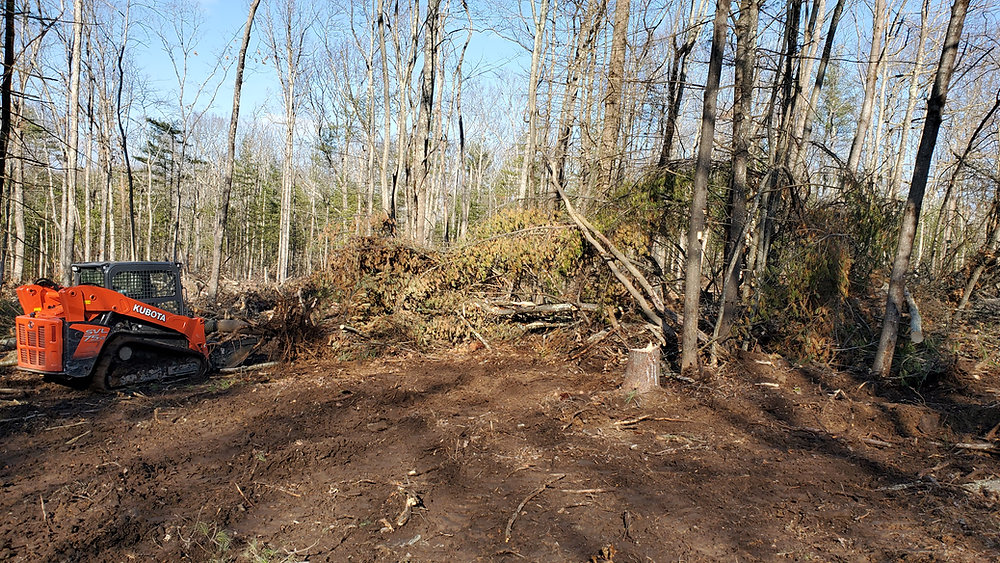Forestry mulching, also known as forest mastication or brushcutting, is an innovative land clearing technique that offers a multitude of benefits compared to traditional methods. It utilizes specialized machinery equipped with a rotary drum and heavy-duty teeth or blades to shred vegetation directly on-site. This single-step process eliminates the need for multiple machines like bulldozers, excavators, and chippers, streamlining land management and reducing environmental impact.
The Power of One Machine: How Forestry Mulching Works
The heart of forestry mulching lies in the powerful mulching machine. These machines, often tractor-mounted or skid-steer attachments, boast a heavy-duty rotary drum equipped with a variety of teeth or blades specifically designed for tackling tough vegetation. As the machine traverses the land, the drum spins at high speeds, shredding trees, brush, stumps, and other organic matter into a fine, nutrient-rich mulch. This mulch is then deposited back onto the ground, creating a protective layer that fosters a healthier ecosystem.
Beyond Land Clearing: The Advantages of Forestry Mulching
While land clearing is a primary application, forestry mulching offers a wider range of advantages:
- Environmental Friendliness: Unlike traditional methods that involve burning or hauling away debris, forestry mulching keeps the shredded material on-site. This not only reduces waste but also creates a natural ground cover that suppresses weed growth, retains moisture, and prevents soil erosion. The decomposing mulch also acts as a natural fertilizer, releasing valuable nutrients back into the soil over time.
- Reduced Costs: By eliminating the need for multiple machines and hauling services, forestry mulching can be a more cost-effective solution compared to traditional methods. Additionally, the chipped mulch layer helps retain moisture, potentially reducing irrigation needs.
- Efficiency and Speed: Forestry mulching is a one-step process, significantly reducing project timelines compared to traditional methods that involve felling trees, hauling debris, and potentially grinding stumps separately.
- Habitat Restoration: Forestry mulching can be a valuable tool for ecological restoration projects. It allows for the removal of invasive species while preserving the existing topsoil and promoting the growth of native plants. The shredded mulch layer also provides habitat for beneficial insects and promotes healthy soil biology.
- Versatility: Forestry mulching machines can be adapted to handle a variety of terrains and vegetation types. From clearing overgrown fields to managing right-of-ways for power lines and pipelines, this technique offers a flexible solution for various land management needs.
Applications of Forestry Mulching
Forestry mulching finds application in a diverse range of scenarios:
- Land Clearing: Forestry mulching is a popular choice for clearing land for development projects, agriculture, or wildlife habitat restoration.
- Right-of-Way Maintenance: Utility companies and municipalities utilize forestry mulching to maintain power lines, pipelines, and other infrastructure located in wooded areas.
- Firebreak Creation: Creating firebreaks is crucial for wildfire management. Forestry mulching allows for the creation of effective firebreaks while leaving behind a fire-resistant mulch layer.
- Slope Stabilization: The shredded mulch layer created by forestry mulching can help stabilize slopes and prevent erosion on hillsides and embankments.
- Stormwater Management: Forestry mulching can be used to create natural buffers along streams and waterways, helping to control erosion and improve water quality.
Considering Forestry Mulching: Factors to Keep in Mind
While forestry mulching offers numerous benefits, it’s essential to consider some factors before implementing it:
- Site Conditions: The size and accessibility of the land, as well as the type and density of vegetation, will determine the suitability of forestry mulching.
- Project Goals: Clearly define your goals, whether it’s complete land clearing, selective vegetation removal, or habitat restoration.
- Regulations: Local regulations regarding land clearing and debris management may apply.
- Hiring a Professional: Hiring a professional forestry mulching contractor with experience in your specific region is crucial to ensure proper technique and adherence to safety regulations from landscape stones.
Forestry mulching presents a sustainable and efficient approach to land clearing and management. By understanding its advantages, applications, and considerations, you can determine if this innovative technique is the right fit for your land management needs.

